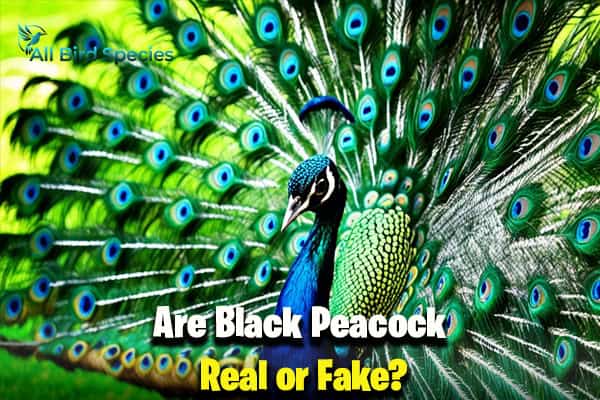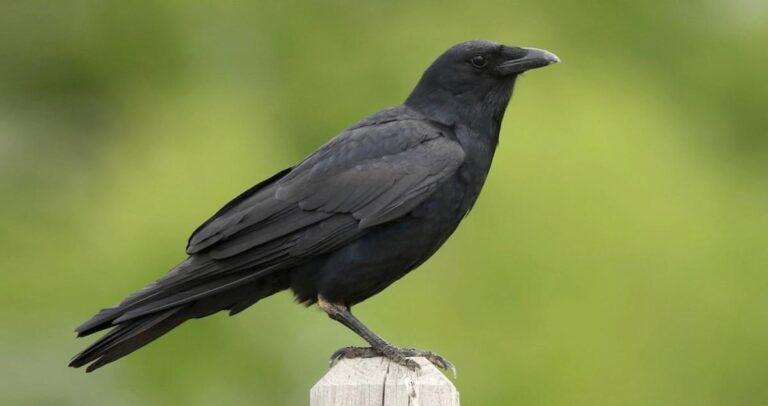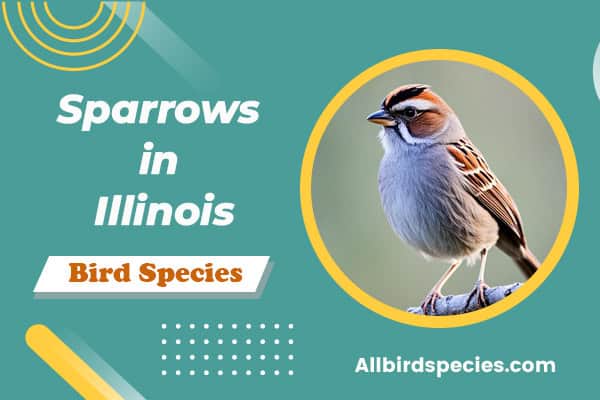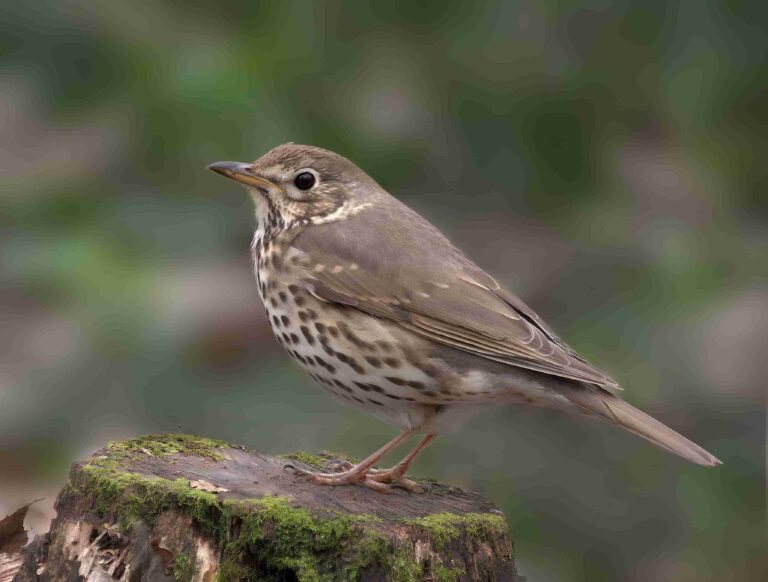Are Black Peacock Real or Fake? Find Out Here!
Did you know only about 1 in every 100 peafowl is a Black Peacock? This fact shows how rare and special these birds are. It makes people curious about their existence and what makes them unique.
The Black Peacock has caught the attention of bird lovers and others. It has led to many myths about peacocks. These myths mix truth with fantasy, making people wonder if Black Peacocks really exist.
Let’s find out the truth about Black Peacocks. We’ll look at their special features, common myths, and why they are so interesting. Are they just a legend, or do they exist? Let’s dive into the world of peafowl and see if the Black Peacock is real.
The Fascinating World of Peacocks
Peacocks are amazing with their beautiful looks and special traits. They live in many places around the world. Each type of peacock has its own look and plumage. Learning about them makes us love these birds more.
Overview of Peacock Species
Some well-known peacocks are the Indian, green, and Congo peafowl. Here’s a table that shows what makes them special:
| Peacock Species | Scientific Name | Geographic Location | Distinctive Features |
|---|---|---|---|
| Indian Peafowl | Pavo cristatus | India, Sri Lanka | Magnificent iridescent feathers, vibrant tail fans |
| Green Peafowl | Pavo muticus | Southeast Asia | Distinct green and gold plumage, elongated tail feathers |
| Congo Peafowl | Afropavo congensis | Congo Basin | Unique dark plumage with silvery spots, smaller size |
Peacock Color Variations
Peacocks have different feathers because of their genes and where they live. These feathers help them find mates and mark their territory. The colors and patterns come from specific genes, making each peacock unique.
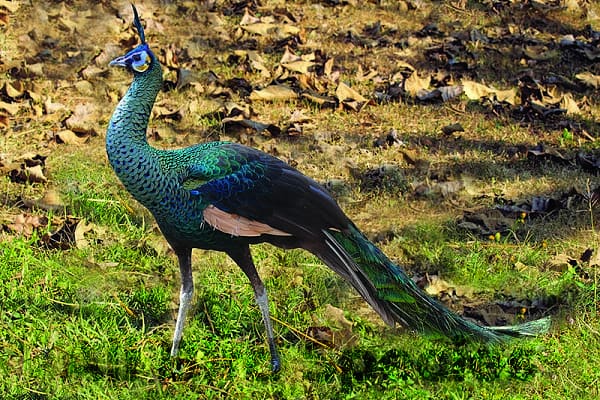
What is a Black Peacock?
Black peacocks, also known as black-shouldered peafowl, stand out with their glossy black feathers. These feathers can look like green or blue in the right light. They are not just beautiful; they also help clear up wrong ideas about themselves.
Defining Characteristics of Black Peacock
You can spot a black peacock by looking for these features:
- Coloration: Deep black feathers with iridescence in bright light.
- Size: Similar in size to other peafowl, typically ranging from 3 to 4 feet.
- Tail: The train is less extravagant than that of Indian peacocks but still displays lovely patterns.
- Sexual Dimorphism: Males are more vividly colored than females, although females display a brownish hue.
Common Misconceptions About Black Peafowl
Many people get black peafowl wrong. Some common mistakes include:
- The belief is that black peacocks are a separate species.
- The assumption is that they lack vibrant colors altogether.
- Claiming their existence is purely mythical or fabricated.
Learning about these wrong ideas helps us see black peacocks for who they really are. They are a special part of the peafowl family.
| Characteristic | Description |
|---|---|
| Color | Glossy black with possible iridescent effects. |
| Size | Approximately 3 to 4 feet tall. |
| Tail | Less ornate than other peacocks, yet attractive. |
| Dimorphism | Males have more vibrant colors than females. |
Are Black Peacocks Real or Fake?
Black peacocks make us wonder about their true nature and how they got their unique look. Some might think they’re just myths or tricks of the eye. Let’s dive into the story behind these fascinating birds.
Exploring the Origin of the Black Peacock Phenomenon
Black peacocks come from certain genetic changes in peafowl. They don’t have the bright colors we usually see in peacocks. Instead, they have a darker look because of their genes. These changes affect their feathers, making them stand out.
This shows how nature can make different types within one species. It’s amazing to see how black peacocks exist within the peafowl family.
The Role of Color Mutations in Peacock Genetics
Color changes in peacocks are key to their variety. These changes can lead to different colors, like the striking black. Each change affects how colors show up, making peacocks look unique.
Learning about these changes helps us appreciate black peacocks more. It also makes us understand bird genetics better.
Genetics Behind Peacock Colors
Peacock genetics show us how their stunning colors come to life. Color mutations are key to their feathers’ colors and patterns. Each gene affects how colors show up, creating a range of beautiful hues.
Color Mutations in Peacocks
Color changes in peacocks happen when genes change how feathers get and keep color. For instance, some changes make feathers look:
- White: No melanin means pure white feathers.
- Cameo: This gives a soft, mixed-color look.
- Spalding: A mix of Indian and green peafowl genes leads to unique colors.
These changes show how feather genetics lead to the peafowl’s beauty.
Importance of Genetic Variation in Feathers
Keeping genetic variety is key for peafowl survival and health. It helps them fight diseases and keeps the gene pool rich. Feather genetics lets peafowl adapt to their world, keeping their beauty for us to see.
Common Color Variations in Peafowl
Peafowl show off a wide range of colors that amaze everyone. Each color type has its own special traits. These come from breeding and genetic changes.
Overview of Different Peacock Color Varieties
Peacocks are famous for their bright colors. They have many types, each with its own look. Some well-known ones are:
- Indian Blue: This is the most common type. It’s known for its bright blue feathers and big tail.
- Green Peafowl: This bird has bright greens and special feathers. It’s a standout in the peafowl world.
- White Peafowl: These birds have a rare gene that makes them all white. They don’t have the usual colors.
- Pied Peafowl: This type has feathers that are both white and colored. It comes from different genetic changes.
- Black-shouldered: This variety is named for the black marks on its shoulders. It looks very elegant.
How Mutations Create Diverse Color Patterns
Mutations are key to the colors of peacocks. They can happen naturally or be made by breeders. Each mutation changes the color, pattern, and look of the bird. Some common ones are:
- Melanistic Mutations: These make the feathers darker.
- Albino Variants: These birds lack pigment, so they’re white with pink or red eyes.
- Differences in Feather Texture: Changes in feather texture can make light hit them in unique ways.
How to Identify a Black Peacock
When you’re out in the field or at an avian exhibit, spotting a black peacock can be thrilling. These birds have unique looks that make them stand out. Knowing how they act helps you spot them easily in different places.
Visual Characteristics to Look For
To spot a black peacock, look for these visual traits:
- Coloration: Their feathers are deep, shiny black. They might look green or blue under certain lights.
- Tail Feathers: Their tail feathers are long and might have special patterns.
- Physical Features: They are sturdy and have a unique crown of feathers on their heads.
Behavioral Traits of Black Peafowl
Black peafowl show behaviors that help identify them:
- Social Interactions: They show off their tails to claim dominance and attract mates.
- Vocalizations: They make loud, clear calls that stand out.
- Movement: Watch how they walk and chase; they move with a sure, steady pace.
Black Peacock Myths and Folklore
Peacocks are more than just beautiful birds. They are tied to peacock folklore from around the world. The rare black peacock has its own stories. These stories tell us a lot about how humans see nature and its symbols.
Cultural Significance of Peacocks
Peacocks mean different things in different cultures. They stand for beauty, pride, and new life. Their bright feathers show they are special, like gods or kings. For example:
- In Hindu stories, the peacock is linked to the goddess Saraswati, meaning wisdom and creativity.
- In Christianity, they symbolize coming back to life and living forever.
- In many Native American traditions, peacocks watch over the spirit world.
Black peacocks also have their own stories. Their rare color makes them seem magical or from another world. This adds to their mystery in folklore.
Common Myths Surrounding Black Peacocks
Black peacocks are often the subject of myths. Some black peacock myths say they are bad luck or signs of death. Others claim they can cast spells or bring luck to their owners.
- Black peacocks are seen as omens of bad luck or death.
- They can bewitch those who look into their eyes.
- Having a black peacock brings good fortune and protection.
These myths show our deep fears and hopes. They highlight how we can see peacocks as magical or misunderstood. Looking into the cultural significance of peacocks reveals a mix of old respect and new superstitions.
The Rarity of Black Peacocks
Black peacocks are rare and exotic birds. They have unique traits from genetic changes and careful breeding. Seeing black peafowl is special for bird lovers. They look amazing and have a mysterious charm.
Why Black Peacocks Are Considered Exotic
Here’s why black peacocks are exotic:
- Limited Population: They are rare, making them a big draw for many.
- Unique Appearance: Their dark feathers and bright eyes make them stand out.
- Cultural Significance: Many cultures see them as mystical, adding to their exotic status.
Where to Find and Observe Black Peafowl
If you want to see these birds, check out these places:
| Location | Type | Description |
|---|---|---|
| Zoo Atlanta | Zoo | Has many peafowl, including black peacocks. |
| Exotic Bird Sanctuaries | Sanctuary | Focuses on rare birds. |
| Local Bird Breeders | Breeding Facility | Some breeders have black peafowl for viewing. |
| Wildlife Reserves | Reserve | Natural places where these birds live and can be seen. |
Looking for black peafowl? Try local parks, wildlife reserves, or private breeders. Your search will be an exciting journey with these exotic birds.
The Role of Breeding in Color Variations
Breeders use special methods to make peacocks with amazing colors. They pick peacocks with the best traits like color and patterns. This way, they make new colors that amaze people all over the world.
How Breeders Create New Peacock Varieties?
Modern breeding uses new ways to make peacocks in different colors. Here are some ways they do it:
- Selective Breeding: They pick peafowl with certain traits to pass on to their babies.
- Pedigree Tracking: They keep detailed records to make sure good genes are kept and improved.
- Color Manipulation: They mix genes to make colors that are not usually seen in nature.
- Controlled Environment: This lets breeders control things like food and living space for better breeding results.
Ethical Considerations in Peacock Breeding
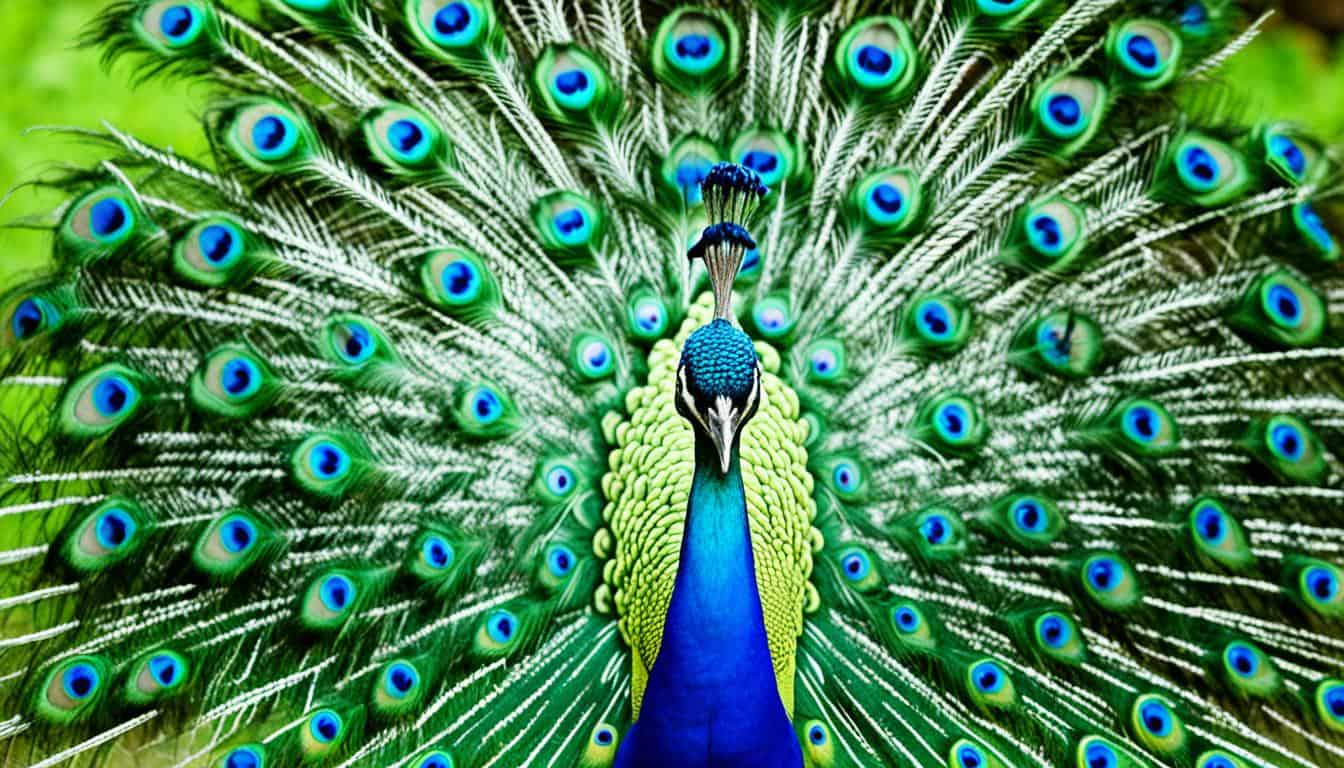
Creating rare peacocks is thrilling, but we must think about ethics. Good breeders care more about their birds’ health than just their looks. Here are some important ethical thoughts:
- Health vs. Appearance: They balance wanting unique colors with keeping the birds healthy.
- Genetic Diversity: They don’t breed too closely to prevent health problems.
- Transparency: They teach buyers about caring for peafowl to encourage good ownership.
- Regulations and Standards: They follow rules for animal welfare in breeding.
Choosing ethical peacock breeding keeps these amazing birds beautiful and ensures a good future for them.
Check Our Previous Articles:
| Yellow Birds With Black Wings |
| How to Stop Birds from Chirping |
| Pineapple Green Cheek Bird |
| Brown Bird with a Long Beak |
| Albino Crows: Meaning, Symbolism, And Myths |
Conclusion
Black peacocks are truly captivating creatures. They show the beauty and diversity of the peafowl family. This article has shared black peacock facts with you.
You now know about their unique backgrounds and characteristics. You also learned about the myths around them. This gives you a clear view of their authenticity and rarity.
Black peafowl may seem exotic, but they are fascinating. Their unique looks come from genetic variations. Breeders have shaped their looks, but it’s important to breed them ethically.
What you’ve learned might make you want to learn more about peacocks. Embrace the wonder of these amazing birds. Share what you’ve learned with others.
Whether it’s at a local sanctuary or through documentaries, there’s more to discover. Let your curiosity grow.

